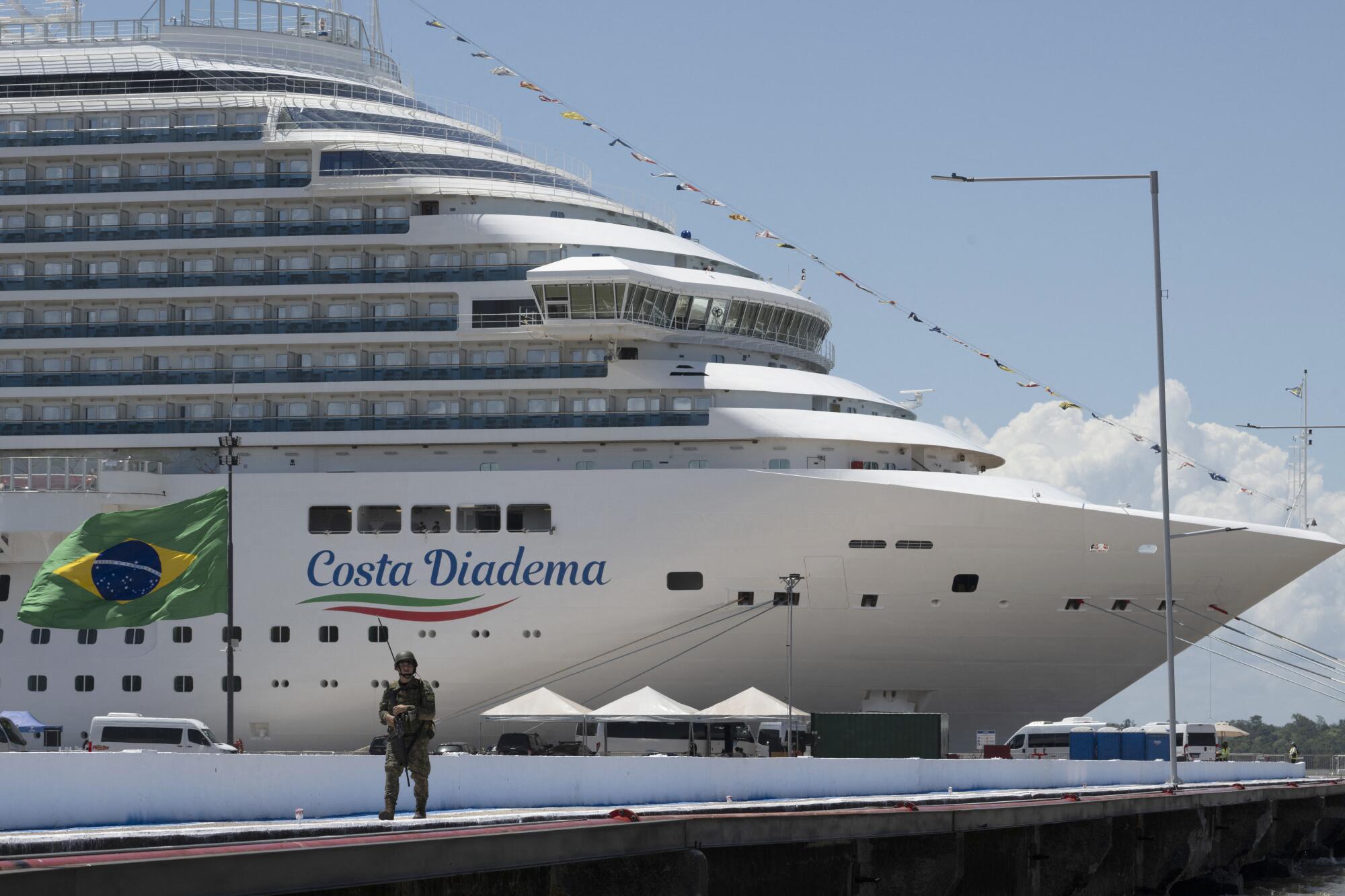The 16 new easyJet routes launching next year from Italian port towns to jet-lag free islands
IF you’re searching for quick, easy and affordable flights for your holiday next year – then check out easyJet’s new routes.
The budget airline has added a whopping 16 new flights to its roster including beautiful islands as well as places within the British Isles – including one that’s been compared to the Caribbean.
Cape Verde
Cape Verde is made up of 10 islands and the best news for Brits is that these sunny spots are just five hours from the UK.
The islands are known for having great winter high temperatures with beautiful beaches and plenty to do – plus there’s only a one hour time difference.
easyJet launched their first-ever flights from the UK to Sal back in April, with routes from London Gatwick and Manchester.
Now, the budget airline has since confirmed that another flight route will be launching to Sal, from Bristol Airport.
Flights will take off from 1 May 2026 and operate on Mondays, Wednesdays and Fridays.
Bari, Italy
Another new route from easyJet will offer new routes from Bristol to Bari.
The port city on the Adriatic Sea coast of southern Italy – the Pugliese capital has even been nicknamed the ‘Jewel of the Adriatic‘.
You can delve into the city’s history in Bari Vecchia which is the historical centre where you’ll find a maze of narrow alleyways, open piazzas, and cobbled side streets.
Most read in Beach holidays
For sightseeing, you’ll find 40 churches in Bari – but one of the most popular is Basilica di San Nicola. It was originally constructed to hold the remains of Father Christmas, which were stolen from Turkey in the 11th century.
Flights start from April 18, 2026 twice-weekly on Tuesdays and Saturdays.
Seville
If you fancy a trip to Spain’s fourth-largest city of Seville – easyJet has added more flights to its roster.
Anyone living in and around Bristol can rejoice as the new route will launch from the airport next spring.
Top sites include the Royal Alcázar of Seville, Seville Cathedral and Plaza de España which is a cobbled square with four bridges over its small river.
easyJet is launching a new route from Bristol to Seville from May 2, 2026 – it will operate twice-weekly on Tuesdays and Saturdays.
Inverness
It might be less exotic but easyJet is also starting a new route between Birmingham and the Highlands’ capital city of Inverness.
It’s surrounded by water as it’s the city where the River Ness meets the Moray Firth – and there are plenty of great sites like the cathedral and Old High Church.
There’s also the indoor Victorian Market where you can pick up food, clothes and crafts.
The new service starts on March 30, 2026, operating twice weekly on Mondays and Fridays.
Nice
If the delightful Mediterranean coast calls to you then head to the French city of Nice.
Here you can stroll along vibrant the city’s cobbled streets, check out the art-deco architecture and ornate 19th-century properties that rival Paris.
Nice is also a great spot if you want to explore the likes of Monaco, Antibes and Cannes.
The main boulevard of Promenade des Anglais holds a classic French market on a Saturday where you can buy flowers, goats’ cheese, cured meats, cakes and grab a souvenir like lavender soap.
Flights from Birmingham start from May 1, 2026, which operates twice weekly on Mondays and Fridays.
Montpellier
Very near the Mediterranean coast of southern France is the city of Montpellier.
It’s filled with grand buildings that are a mix of medieval and modern architecture – in the summer it can reach highs of 28C.
While Montpellier isn’t directly on the coast, you don’t have to travel far to find pretty beaches like Carnon, La Grande Motte, GrandsTravers, and Palavas-les-Flots.
Not to mention that just outside of Montpellier, Domaine de Massereau was named the most eco-responsible campsite in Europe last year.
It has plenty to entertain the kids like the Aquatic area which heated swimming pool and one that’s for adults-only with whirlpools and water jets.
For little ones, there’s a spray park, waterslides and a paddling pool as well as two on-site kids’ clubs.
The airline is launching new flights to Montpellier from Manchester on 30 March 2026.
Preveza
On the west side of Greece is the city of Preveza which is the capital of the Epirus region.
The region itself is known for its incredible mountain landscape, as well as pretty beaches.
It’s home to Vikos Gorge, one of the world’s deepest, and clean rivers where locals and tourists like to go kayaking, rafting, and canoeing.
In Preveza you can explore sites like the Nicopolis Museum and Pantocrator Castle or relax on the long, sandy Monolithi Beach.
If you fancy checking out some other places too then you can head to other destinations like Parga, Lefkada and Sivota easily from Preveza.
Flights to Preveza from Manchester start on June 24, 2026.
Lisbon
The capital of Portugal has always been a solid choice of holiday for Brits.
With a flight time under three hours and plenty to do from riding the iconic trams up the hilly roads, to hiking up to Castelo de São Jorge – Lisbon is a solid choice.
And there are plenty of viewing points to see the incredible views across the city like Miradouro de Santa Luzia.
There are two new routes to Lisbon, the first is from Manchester with flights departing from March 31, 2026.
The other route is from Glasgow which will provide direct links to Lisbon from March 29, 2026
Paphos
Last year, Paphos in Cyprus was been voted the most liveable small city in the world.
When one writer visited the seaside spot, she made sure to check out the delicious seafood, and headed out to sea on a boat trip to the Blue Lagoon.
She also said that “the Unesco World Heritage site of Kato Pafos really is a must-see. The park includes sites and monuments from the 4th century BC to the Middle Ages”.
Paphos is a great option for summer if what you like is the heat as it has highs of 30C in July and August.
Or even during the cooler months like November where you can still have average highs of 22C.
You’ll be able to fly from Manchester to Paphos from August 2, 2026.
Jersey
Another short journey that’s easy to make is to Jersey – the British Isle that gets summer weather before the mainland.
The Channel Island has even compared to the Caribbean and its one of the warmest places in spring.
It even has some of the country’s best beaches – and you can get there in under an hour.
easyJet will start its route from Southend Airport to Jersey from March 30, 2026.
Paris
Another new route is from Stansted to Paris – the capital of France is known for its great food and plenty of iconic landmarks like the Eiffel Tower.
It’s also home to the theme park, Disneyland Paris, which is set to open its new Frozen land on March 29, 2026.
There will be new rides, frosty mountain peaks and you can see it all from inside a miniature Arendelle.
Find out more from The Sun’s Assistant Travel Editor Sophie Swietochowski who got an exclusive peek at the new land.
Flights from London Stansted to Paris will start on March 5, 2026
Tenerife
Tenerife is well known for its year-round sunshine, beautiful beaches, amazing stargazing opportunities, and lively nightlife.
For years its been a popular place for Brits to visit, particularly those looking for some winter sun.
It’s good news for those who are fans of the island as Ryanair recently announced it would be cutting flights due to rising tax.
Flights from Newcastle to Tenerife will start on August 1, 2026.
Pisa
The city of Pisa in the Tuscan region of Italy is of course best known for its Leaning Tower which is a must-see when visiting.
But there are lots of other positives too like exploring the beautiful cobbled streets and tasting fantastic food from pizza to cecina (a savory chickpea flour pancake) and Torta co’ Bischeri (a chocolate-filled pastry).
easyJet flights from Glasgow to Pisa start from August 1, 2026.
Sharm El Sheikh
Trips to Egypt are back on the rise with the likes of TUI starting trips and holidays there – and now easyJet is offering flights too.
The holiday destination that was huge with Brits in the noughties has plenty of pretty beach resorts, high temperatures and year-round sunshine.
During the summer months, temperatures in Sharm el Sheikh sit between 35C – 38C.
Sharm el Sheikh is also a popular winter sun destination because its average temperature is 24C which is around 17C warmer than the UK for that time of year.
Routes between Glasgow to Sharm El Sheikh will start from August 1, 2026.
Malta
Malta, which is smaller than the Isle of Wight, can slip under the radar when it comes to holidays.
But with new flights from easyJet, it’s bound to get more popular.
When one Sun writer visited the country, she discovered plenty of things that Brits will love from its red telephone boxes to restaurants offering English breakfasts.
Locals drive on the left and speak English (along with Maltese).
New flights from Glasgow to Malta will start from August 4, 2026.
For more holiday destinations – here are five alternative European holiday destinations you can still fly to after Ryanair axed hundreds of flights.
Plus, one of the best budget getaways in Europe for winter has been revealed and pints are 90p.



